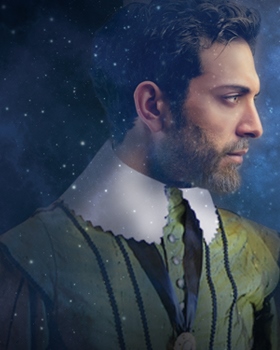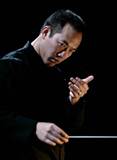
"Galileo Galilei" New Venture for Cincinnati Opera

It was opera that brought Kelly Kuo to Cincinnati,
but it was love that made him stay.

Married to Kim Pham, a licensed massage therapist at Intuitive Touch in Cincinnati, Kuo has served as a rehearsal pianist for Cincinnati Opera, assistant conductor of the Cincinnati Chamber Orchestra and music director of the Xavier University Chamber Orchestra. Born in Richland, Washington of Taiwanese descent, he now commutes between Cincinnati and Eugene, Oregon, where he is artistic director of the Oregon Mozart Players, and Austin, Texas, where he is music director of the Butler Opera Center at the University of Texas.
A piano major at the University of Oregon, with a master’s degree in piano from the Manhattan School of Music – Kuo’s “claim to fame,” he says, is that he studied with Byron Janis and Dean Kramer, Vladimir Horowitz’s first and last students – Kuo first came to Cincinnati in 2001 as rehearsal pianist for Cincinnati Opera’s “Bluebeard’s Castle” and “Erwartung” (Bartok, Schoenberg) and Verdi’s “Nabucco.”
This summer Kuo makes his company debut conducting Philip Glass’ “Galileo Galilei.” The event marks Cincinnati Opera’s first production at the School for Creative and Performing Arts, with performances in SCPA’s Corbett Theater at 7:30 p.m. July 11, 14, 17, 19 and 3 p.m. July 21.“Galileo Galilei” deals with Galileo’s struggle with the Roman Catholic Church over his writings advancing the belief that the Earth rotates around the Sun. First proposed by Nicolaus Copernicus, this was deemed heresy. Galileo was tried and convicted by the Inquisition and sentenced to house arrest for the rest of his life.
Composed in 2002 and premiered at the Goodman Theater in Chicago, the opera is 90 minutes long, with ten scenes and no intermission.
“The storytelling is backwards, starting with Galileo being 80 years old, completely blind, but still hopeful in his beliefs,” said Kuo. “Hopeful that they were correct, despite all the trials and tribulations he’s faced over his life for believing them.”
The opera has a touching personal dimension in the relationship between Galileo and his daughter Maria Celeste, who predeceased him at age 33.
The first scene takes place with Galileo old and blind, thinking of Maria Celeste and reflecting on the events of his life. Other scenes deal with his recantation before Pope Urban VIII, a comforting letter from Maria Celeste, Galileo’s trial for heresy, excerpts from his book discussing competing views of the universe, an onstage demonstration of the laws of motion, a walk in the garden by Galileo and the future pope, a scene in church where a swinging lamp prompts Galileo to explain the science of pendulums to Maria Celeste, the presentation of his telescope to a Grand Duchess, and finally, Galileo as a child viewing an opera written by his father Vincenzo Galilei.
There are 23 characters and nine singers. A chamber opera, it is scored for six winds, two percussion, keyboard and strings (violin, viola and cello). “It’s not specified as to the number of strings,” said Kuo, who conducted it for Madison Opera in 2012. “With Philip Glass, there’s a lot of repetitive musical gestures and for the string players, that translates into continuous bow use. When I only had one cellist (in Madison), I found that he had to be spelled quite a bit by the keyboard player. Here we have eight violins, six violas and four cellos, so they’ll be able to spell each other.”
What Glass does with the music, said Kuo, is “set an atmosphere, almost like movie music, in the textures and the busyness or calmness of the orchestration. Like a lot of contemporary opera, there are a few scenes where it’s close to rock if you let the synthesizer have its core sound. If you try to bury it and make it more ‘operatic,’ I don’t think it works. My plan is to have the keyboard be a major component -- not to dominate, but I don’t want to hide the color.”
The conflict between science and religion remains relevant in our day, said Kuo, but Glass and librettist Mary Zimmerman make no direct parallels in “Galileo Galilei.” “If you let the storytelling take place, you realize how the same thing is happening today in other areas.”
The set design takes an abstract view of Italian Renaissance architecture, with dozens of columns, “all reaching up like hands to the heavens,” said designer David Centers. “We have a lot of stars and we have planets represented abstractly by orbs that fly in at different times and can glow to any color in the rainbow. There are different lighting effects for each location. For the walk in the garden, Thomas Hase (lighting designer) is lighting the columns to represent trees.”
(first published at expresscincinnati.com)